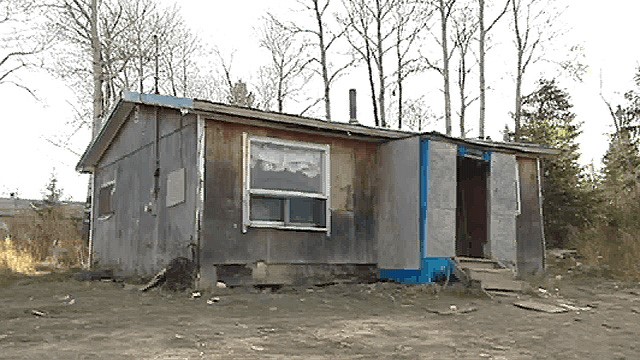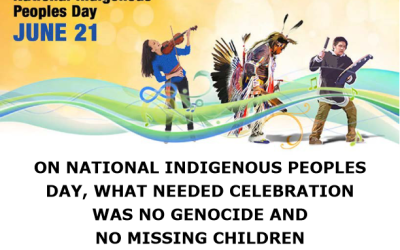Pierre Poilievre recently made headlines when he criticized The Indian Act – calling it racist and archaic. In fact, his remarks were not even controversial, because many indigenous leaders have said the same thing for more than half a century. The Indian Act is indeed a racist anachronism that should have been consigned to the rubbish bin decades ago. No one defends it.
In fact, Indian chiefs called for the abolition of the Act decades ago. This was in the 1960s. The chiefs said that it was shameful that a country that called itself enlightened and progressive could live with itself, while it had an apartheid system that treated Indians like children. They said it kept them in a ghetto.
They explained that most indigenous people lack basics that most Canadians take for granted. They don’t have the education or job skills, too many sit in jails, or are taken as children into child welfare systems, too many abuse alcohol, and live shorter, bleaker lives. In short, too many are part of a chronically unemployed and dependent underclass that lives short, bleak lives, and passes that dismal legacy on to their children.
And those chiefs were right. The Indian Act and reserve system is everything they said it was. Even in the 1960s, there was absolutely no excuse for hanging on to such a disgraceful system – a system that did indeed keep status Indians in a ghetto.
With that in mind, then Prime Minister Pierre Trudeau, and his young Indian Affairs minister, Jean Chrétien, set out to get status Indians out of that ghetto. In their 1969 White Paper, the beginnings of a plan were outlined that would slowly, carefully and expensively, get rid of The Indian Act, and its regressive reserve system.
However, it was respectful of the fact that indigenous people had clearly rejected assimilation. The Paper tried to navigate a third way – that fine line between forced assimilation and continued segregation- finding a path to the needed integration, without forced assimilation.
Specific strategies were suggested. Status Indians would be helped to move into the economic mainstream, with ambitious government programs that promised to let them obtain the necessary education and work skills. In addition, financial and other assistance would be made available to status Indians who wanted to move from uneconomic remote reserves to centres where jobs and careers were available. Eventually, according to the plan, there would be no legal differences between status Indians and other Canadians. Everyone would enjoy exactly the same rights.
Trudeau and Chrétien were proud of the White Paper. Although it was acknowledged to be only the beginning of what would have been – even in 1969 – an extremely lengthy and complicated process, they thought that this was the beginning of a sound plan to get them out of the ghetto.
But when the White Paper was presented, all hell broke loose. The chiefs called the plan that would make their people the equals of every other Canadian “racist”. The reality was that they refused to give up their perks.
This is why an angry Pierre Trudeau told the chiefs “Okay, then stay in your ghetto”. He withdrew the paper, and initiated the indigenous policy that has been basically the same for the last fifty plus years, namely: Send money, and don’t touch The Indian Act.
That is where things sit today. Astounding sums of money are spent maintaining this gilded, but fundamentally rotten ghetto. Politicians pretend to be making significant changes to this stagnant system, with countless expensive government programs. They also humour indigenous politicians by declaring the totally dependent, mostly dysfunctional reserves, to be independent “nations”. Chiefs and status quo and media apologists call any criticism “denialism”.
But nothing has really changed since 1969, except that the money amounts have increased astronomically. Despite the fact that many good people live in those communities, most reserves remain basically dependent human warehouses, rife with corruption and abuse.
And perhaps the most debilitating feature of these ghettos is the culture of permanent victimhood that now plagues reserves. Hysterical conspiracy theories about priests poisoning, murdering, and secretly burying thousands of indigenous children now run rampant in these communities. Reserves are indeed the ghettos that the chiefs correctly described so long ago.
But Pierre Trudeau got one thing wrong when he angrily told the chiefs that they could stay in their ghetto. The chiefs are not in a ghetto at all. They enjoy generous tax-free-salaries and expense accounts. Life is good for them. Neither are many other people who feed off this system- a system indigenous leaders William Wuttunee and Calvin Helin sardonically – but accurately – called “The Indian Industry”.
And lest this last sentence be considered offensive, it should be noted that there are at least as many non-indigenous, as indigenous people, who are dependent on this system. Entire universities, expensive law firms, and legions of indigenous affairs bureaucrats are doing very well because of it.
And they have no intention of letting it go.
There are many reasonable and progressive leaders within the indigenous community who can clearly see how the privileged position of the chiefs depends on the permanent marginalization of the underclass majority. However, those honest voices are drowned out by the majority – the AFN – who refuse to give up the many special perks the system offers them. The money always wins. Their voices are also ignored by reckless writers and activists, who advance their careers by pushing the grievance narrative. True reformers, like Winston Wuttunee and Shawn Atleo, never stood a chance.
So, Pierre Trudeau was prescient half a century ago, when he told the chiefs that the marginalized indigenous underclass majority would continue to live in a ghetto. The dismal statistics that are well known attest to this.
And, the question must be asked: What if those chiefs in 1969 had at least agreed to consider Trudeau’s plan, and work with him to address their legitimate concerns? Would we now live in a country where more indigenous people had integrated into the mainstream, while keeping those parts of their indigenous identity that mattered most to them?
We will never know.
But it is hard to imagine how are leaders – indigenous and non-indigenous – could have done much worse.
Brian Giesbrecht, retired judge, is a senior fellow at the Frontier Centre for Public Policy


